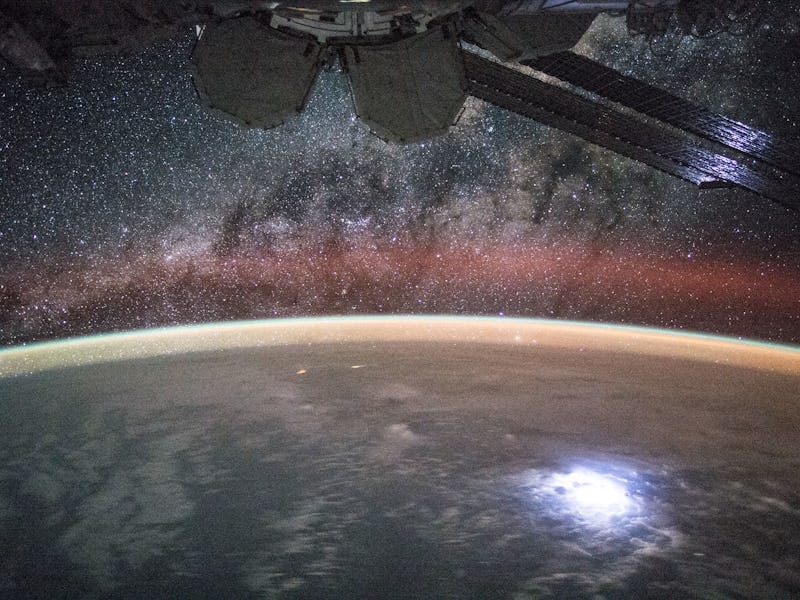The International Space Station Just Completed Its 100,000th Orbit
That’s equivalent to about 10 round trips to Mars.

It wasn’t too long ago that the International Space Station completed a 15-year milestone for housing human occupants. On Monday, having spent 6,387 in space since its initial Zarya cargo module was launched on November 20, 1998, the ISS completed its 100,000th orbit around Earth.
“This is a significant milestone and is a tribute to this international partnership made up of the European Space Agency, of Russia, Canada, Japan and the United States,” U.S. astronaut Jeff Williams, currently aboard the ISS, said from the station in a video posted by NASA.
The orbital distance tallies up to about 2.65 billion miles traveled. To put that in perspective, that’s also about 10 round trips from this planet to Mars (when considering an average distance of 140 million miles between planets). That’s also just 300 million miles shy of the average distance between Earth and Neptune. Mars doesn’t seem so far away now, does it?
Granted, NASA’s best estimates for how long it might take for humans to travel to the red planet are between six months and a year. Although Scott Kelly and Mikhail Kornienko spent about a year working and living aboard the ISS, that was quite the exception to the norm — and it’s going to take a bit more time (read: several years) before NASA figures out how to make longterm space duration feasible.
The station’s benchmark was complemented by the release of a set of CubeSats from the spacecraft’s Kibo lab module. These mini satellites, more of which will be released Wednesday, will help in conducting a wide array of research designed by students and scientists from around the world.